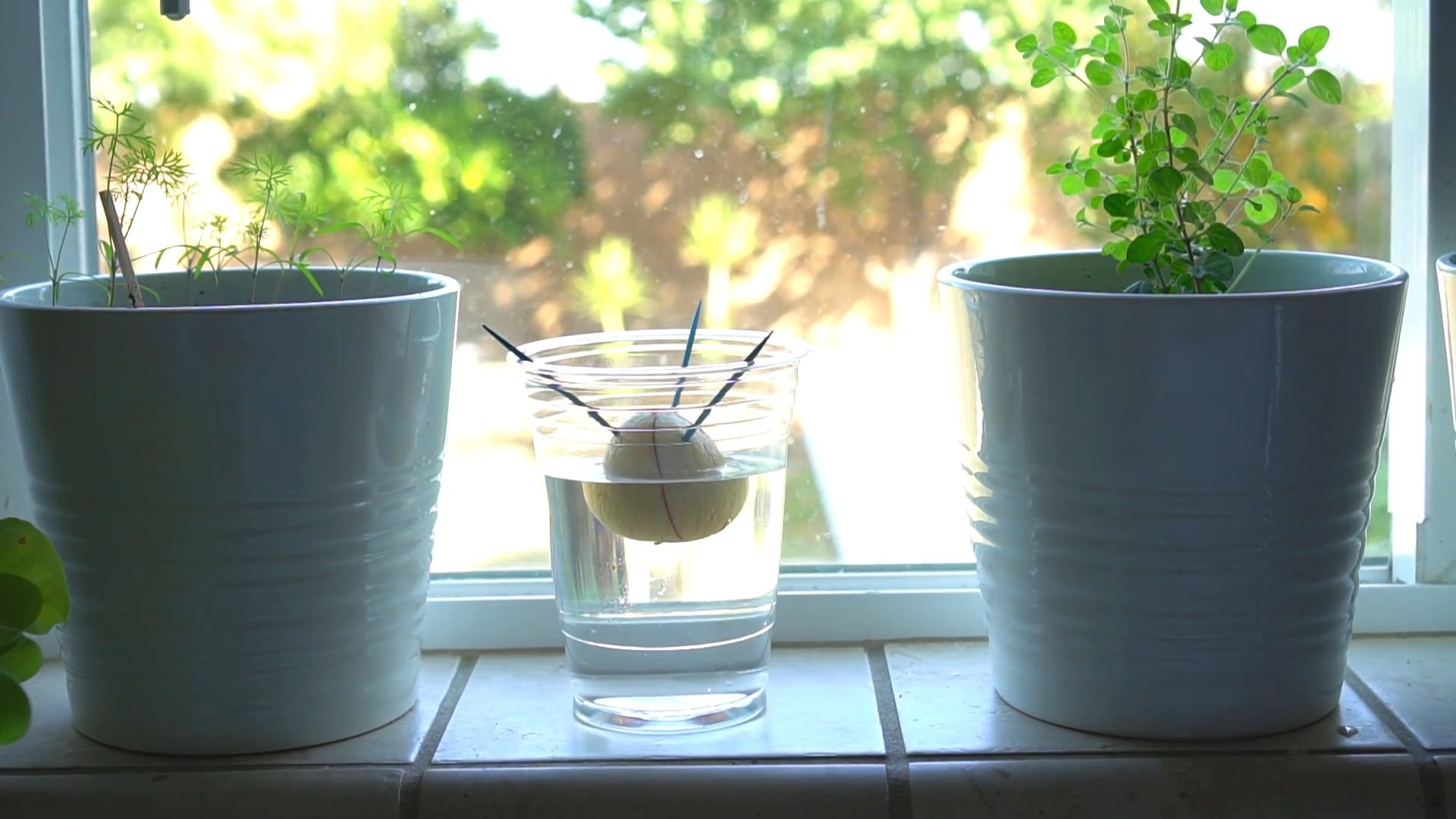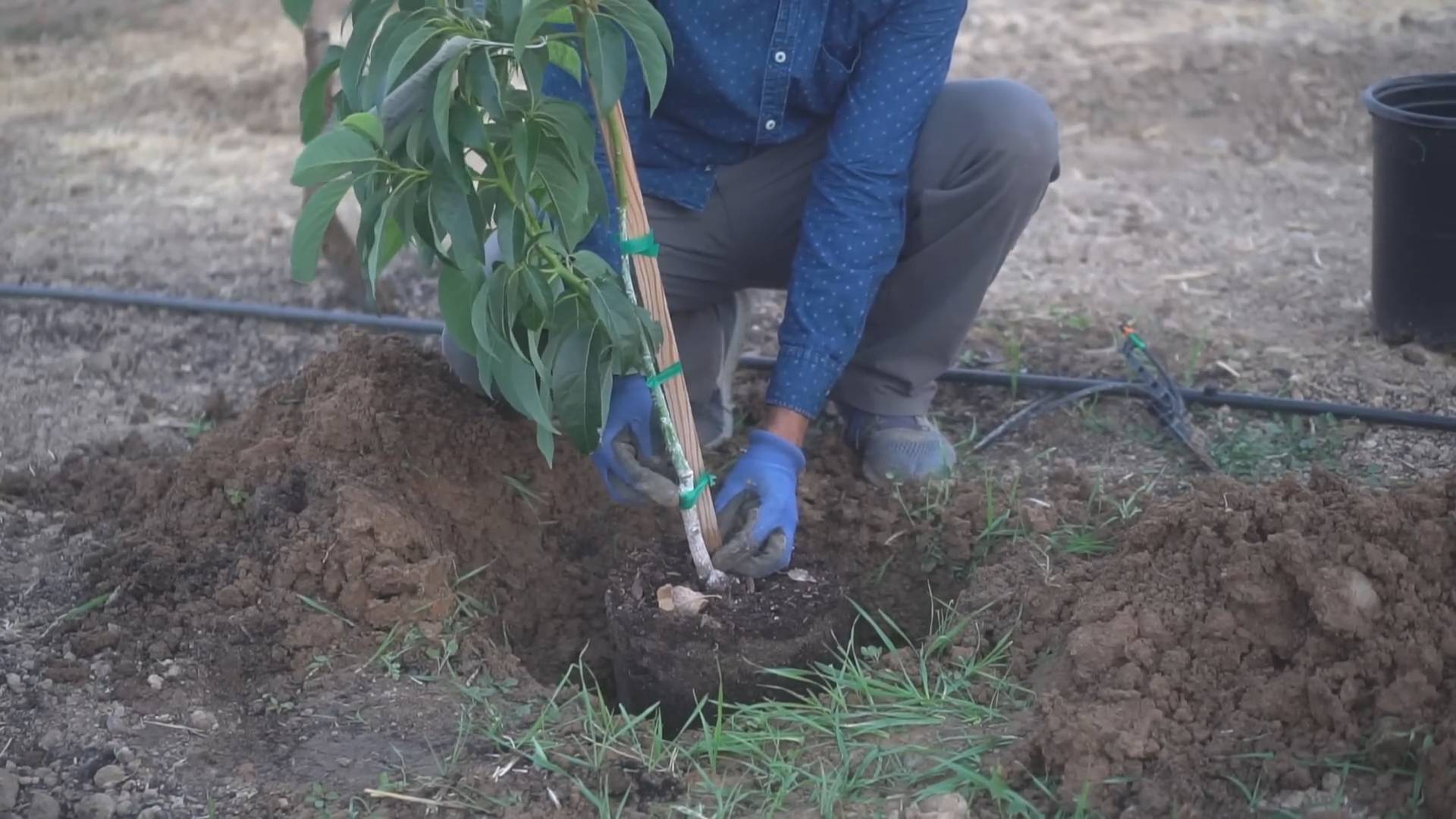Grow Avocados at Home? Absolutely! Imagine plucking a creamy, delicious avocado straight from your own tree, grown with your own two hands. It’s not just a dream; it’s an achievable reality with a little know-how and some simple DIY magic. For centuries, avocados have been prized for their rich flavor and nutritional benefits, dating back to ancient Mesoamerica where they were even considered symbols of love and fertility.
But let’s be honest, buying avocados at the grocery store can be a gamble – either rock hard or already turning brown the moment you get them home! That’s where this DIY guide comes in. I’m going to share some easy-to-follow tricks and hacks that will empower you to grow avocados at home, regardless of your gardening experience.
Whether you have a sprawling backyard or just a sunny windowsill, I’ll show you how to nurture your own avocado tree from seed to (hopefully!) fruit. Get ready to ditch the grocery store avocado roulette and embark on a rewarding journey of homegrown goodness. Let’s get started!

Growing Avocados at Home: My DIY Guide for Beginners
Hey everyone! Have you ever wondered what it would be like to grow your own avocados? I have too! And after a few trials and errors, I’ve finally found a method that really works. Today, I’m sharing my experiences and a detailed guide on how you can grow your own avocado plants at home. It’s easier than you think, and the feeling of harvesting your own avocado (even if it takes a few years!) is simply priceless.
What you’ll need:
- An avocado pit: Preferably from a ripe, organic avocado.
- Toothpicks: 3-4 of them.
- A glass or container: Wide enough to hold the pit, but not too deep.
- Water: Tap water is fine.
- Potting soil: A good, nutrient-rich potting soil.
- A pot: A pot with good drainage.
- Patience: The most important thing!
The Preparation of the Avocado Pit
Before we get started, it’s important to prepare the avocado pit correctly. Here are the steps I always follow:
- Carefully remove the pit: After you’ve eaten your avocado (or used the flesh for guacamole!), carefully remove the pit. Be sure not to damage it.
- Clean it: Wash the pit thoroughly under running water to remove all fruit residue. This is important to prevent mold.
- Identify the top and bottom: This is crucial! The pointier side of the pit is the top, where the sprout will grow. The flatter side is the bottom, where the roots will grow.
- Insert toothpicks: Insert 3-4 toothpicks at an even distance around the middle of the pit. They should penetrate about half a centimeter deep. These toothpicks will serve to stabilize the pit in the glass.
The Germination of the Avocado Pit
Now comes the exciting part: germination!
- Prepare the glass: Fill your glass or container with water. Make sure the water is clean.
- Place the pit: Place the pit with the toothpicks on the rim of the glass so that the bottom half of the pit is submerged in water. The top should remain dry.
- Choose a location: Place the glass in a warm, bright spot, but not in direct sunlight. A windowsill is ideal.
- Check the water level: Check the water level regularly and top it up as needed. The bottom half of the pit should always be in the water.
- Be patient: This is the hardest part! It can take weeks or even months for the pit to crack open and form roots. Be patient and don’t give up! I’ve had pits that sprouted after two weeks, and others that took three months.
Transplanting into Soil
Once your avocado pit has developed roots and a small sprout, it’s time to transplant it into soil.
- Wait for the right size: Wait until the roots are about 5-8 cm (2-3 inches) long and the sprout is about 15 cm (6 inches) high. This is the ideal stage for transplanting.
- Prepare the pot: Fill your pot with good potting soil. Make sure the pot has good drainage so that water can run off.
- Planting: Make a hole in the soil large enough to accommodate the pit and the roots. Carefully place the pit in the hole so that the top of the pit (about half of it) is sticking out of the soil.
- Watering in: Gently water the soil until it is moist, but not soaked.
- Choose a location: Place the pot in a bright, warm place, but avoid direct sunlight, especially in the first few weeks after transplanting.
Caring for Your Avocado Plant
Now that your avocado plant is in soil, it’s important to care for it properly so that it grows healthy and strong.
- Watering: Water the plant regularly, but avoid waterlogging. The soil should always be slightly moist, but not soaked. I always check the soil with my finger before I water. If the top layer feels dry, it’s time to water.
- Fertilizing: Fertilize the plant every few weeks with a balanced liquid fertilizer. Follow the instructions on the fertilizer package.
- Pruning: If the plant gets too tall or has too few leaves, you can prune it. This encourages the growth of new shoots and leaves. Simply cut off the tip of the main shoot.
- Repotting: When the plant becomes too large for its pot, you will need to transplant it into a larger one. This is usually necessary every one to two years.
- Pests and diseases: Watch out for pests like aphids or spider mites. If you discover pests, you can treat them with an insecticide or a soap solution. Also, watch for signs of diseases like root rot.
Additional Tips and Tricks
- Patience is the key: Avocados take time to grow. Be patient and don’t give up if it doesn’t work right away.
- Try different pits: Not all avocado pits will sprout. Try different pits to increase your chances.
- Increase humidity: Avocados love high humidity. You can increase the humidity by regularly spraying the plant with water or by placing it near a humidifier.
- Overwintering: In colder climates, you will need to bring your avocado plant indoors for the winter. Place it in a bright, cool location and water it less.
- Fruiting: It can take many years for an avocado plant grown from a pit to bear fruit. And even then, it’s not guaranteed. To encourage fruiting, you may need to graft the plant. This is a more advanced topic, but it’s worth looking into if you really want to harvest avocados.
Common Problems and Solutions
- Pit is rotting: If the pit is rotting, it’s likely too moist. Remove the rotten pit and try again with a new one. Make sure the top of the pit stays dry.
- No roots: If the pit still hasn’t formed roots after several weeks, it may not be viable. Try again with a new pit.
- Leaves are turning brown: Brown leaves can be a sign of overwatering, underwatering, or too much sunlight. Adjust your care accordingly.
- Pests: Check your plant regularly for pests and treat them as needed.
Why Grow Avocados from Pits?
Even though it can take a few years for your avocado plant to bear fruit (and there’s no guarantee!), there are many reasons why it’s worth growing avocados from pits:
It’s educational: You learn a lot about plant growth and care.
It’s a great project: It’s a fascinating and rewarding project that brings you closer to nature.
It’s environmentally friendly: You’re recycling a waste product and contributing to sustainability.

Conclusion
So, there you have it! Growing avocados at home, while requiring patience, is an incredibly rewarding experience. It’s a chance to connect with nature, learn about the life cycle of a plant, and eventually, enjoy the fruits (literally!) of your labor. This DIY trick isn’t just about saving money on store-bought avocados; it’s about cultivating a deeper appreciation for the food we consume and fostering a sustainable lifestyle.
We’ve walked you through the process, from sprouting the pit to nurturing your young avocado tree. Remember, success hinges on providing the right environment: ample sunlight, well-draining soil, and consistent watering. Don’t be discouraged by initial setbacks. Gardening is a journey of learning and adaptation. Each failed attempt provides valuable insights that will help you refine your approach.
Consider experimenting with different avocado varieties to discover which thrives best in your local climate. You might try Hass, Fuerte, or even a Mexican variety known for its cold hardiness. You can also explore different potting mixes to find the optimal blend for your avocado tree’s growth. Some gardeners swear by adding perlite or vermiculite to improve drainage, while others prefer a mix rich in organic matter.
Beyond the basic method, there are variations you can explore. Grafting, for instance, allows you to combine the rootstock of a hardy avocado variety with the scion of a more desirable fruit-producing tree. This can significantly reduce the time it takes for your tree to bear fruit and ensure that you get the specific type of avocado you desire. Air layering is another advanced technique that allows you to propagate new avocado trees from existing branches.
But even without these advanced techniques, simply sprouting an avocado pit and nurturing it into a small tree is a fantastic accomplishment. It’s a conversation starter, a source of pride, and a tangible reminder of your connection to the natural world.
We strongly encourage you to give this DIY trick a try. It’s a project that can be enjoyed by individuals, families, and even classrooms. Imagine the excitement of watching a tiny root emerge from an avocado pit and then witnessing the gradual unfolding of leaves. It’s a truly magical experience.
And once you’ve embarked on your avocado-growing adventure, we’d love to hear about your experiences! Share your photos, tips, and challenges in the comments section below. Let’s create a community of avocado enthusiasts who can learn from each other and celebrate the joys of growing avocados at home. Your insights could be invaluable to other aspiring avocado growers. Let’s all work together to make **growing avocados at home** a success for everyone!
Frequently Asked Questions (FAQ)
1. How long does it take for an avocado tree grown from a pit to produce fruit?
This is perhaps the most common question, and the answer is: patience is key! Avocado trees grown from seed can take anywhere from 5 to 13 years to bear fruit. Unlike grafted trees, which are clones of mature, fruit-bearing trees, seed-grown trees need to reach maturity on their own. The exact timeframe depends on several factors, including the avocado variety, the climate, and the care the tree receives. Grafting significantly reduces this time, often yielding fruit within 2-3 years. If you’re eager for avocados sooner rather than later, consider purchasing a grafted avocado tree from a reputable nursery. However, the journey of growing one from seed is still a worthwhile and educational experience.
2. What kind of soil is best for avocado trees?
Avocado trees thrive in well-draining soil. They are susceptible to root rot if their roots sit in waterlogged conditions. A slightly acidic to neutral pH (around 6.0 to 7.0) is ideal. A good potting mix for container-grown avocados should consist of a blend of:
* Potting soil: Provides essential nutrients and structure.
* Perlite or Vermiculite: Improves drainage and aeration.
* Compost or other organic matter: Enhances soil fertility and water retention.
Avoid heavy clay soils, as they tend to retain too much water. If you’re planting your avocado tree in the ground, amend the soil with organic matter to improve drainage and fertility. Raised beds can also be beneficial in areas with poor drainage.
3. How much sunlight do avocado trees need?
Avocado trees are sun-loving plants and require at least 6 hours of direct sunlight per day. The more sunlight they receive, the better they will grow and produce fruit. If you’re growing your avocado tree indoors, place it near a sunny window, preferably one that faces south or west. You may also need to supplement with artificial light, especially during the winter months. Rotate the tree regularly to ensure that all sides receive adequate sunlight.
4. How often should I water my avocado tree?
Watering frequency depends on several factors, including the size of the tree, the climate, and the type of soil. As a general rule, water your avocado tree deeply whenever the top inch or two of soil feels dry to the touch. Avoid overwatering, as this can lead to root rot. During the hot summer months, you may need to water more frequently. In the winter, when the tree is dormant, you can reduce watering. Always check the soil moisture before watering to ensure that the tree needs it.
5. What are some common problems that affect avocado trees?
Avocado trees can be susceptible to several problems, including:
* Root rot: Caused by overwatering and poor drainage.
* Pests: Aphids, spider mites, and scale insects can infest avocado trees.
* Diseases: Anthracnose and avocado scab are common fungal diseases.
* Nutrient deficiencies: Yellowing leaves can indicate a lack of essential nutrients.
Regularly inspect your avocado tree for signs of pests or diseases. Treat any problems promptly to prevent them from spreading. Provide your tree with proper care, including adequate sunlight, water, and nutrients, to keep it healthy and resilient.
6. Can I grow an avocado tree indoors permanently?
While it’s possible to grow an avocado tree indoors for an extended period, it can be challenging to provide the ideal conditions for fruit production. Indoor avocado trees often require supplemental lighting, careful watering, and regular fertilization. They may also need to be repotted as they grow. Even with the best care, indoor avocado trees may not produce fruit. However, they can still be attractive and rewarding houseplants. If you live in a climate with mild winters, you can move your avocado tree outdoors during the warmer months to give it a boost of sunlight and fresh air.
7. How do I encourage my avocado tree to fruit?
Getting an avocado tree grown from seed to fruit can be tricky. Here are some tips:
* Patience: As mentioned earlier, it can take many years for a seed-grown avocado tree to fruit.
* Sunlight: Ensure your tree receives at least 6 hours of direct sunlight per day.
* Fertilization: Feed your tree regularly with a balanced fertilizer formulated for avocado trees.
* Pruning: Prune your tree to encourage branching and improve air circulation.
* Grafting: Consider grafting a branch from a known fruit-bearing avocado tree onto your seedling. This will significantly reduce the time it takes for your tree to produce fruit and ensure that you get the desired avocado variety.
* Pollination: While avocado trees are self-pollinating, cross-pollination with another avocado tree can increase fruit production. If possible, plant two different avocado varieties near each other.
8. What are the different types of avocados I can grow?
There are many different avocado varieties, each with its own unique characteristics. Some popular varieties include:
* Hass: The most widely grown avocado variety, known for its creamy texture and nutty flavor.
* Fuerte: A popular variety with a smooth, green skin and a rich, buttery flavor.
* Reed: A large, round avocado with a thick, green skin and a creamy texture.
* Pinkerton: A long, pear-shaped avocado with a small seed and a rich, nutty flavor.
* Gwen: Similar to Hass but smaller and more compact, making it a good choice for smaller gardens.
Choose an avocado variety that is well-suited to your local climate and growing conditions.
9. Is it safe for pets if I grow avocados at home?
Avocado leaves, bark, skin, and pit contain persin, a fungicidal toxin that can be harmful to some animals, including dogs, cats, horses, and birds. While the flesh of the avocado is generally considered safe for humans, it’s best to keep all parts of the avocado plant out of reach of your pets. If you suspect that your pet has ingested any part of an avocado plant, contact your veterinarian immediately.
10. Where can I find more information about growing avocados?
There are many resources available online and in libraries that can provide you with more information about growing avocados. You can also consult with local nurseries or gardening experts for advice specific to your region. Look for resources from reputable sources, such as university extension programs or agricultural organizations. Remember that **growing avocados at home** is a learning process, so don’t be afraid to experiment and ask questions.




Leave a Comment